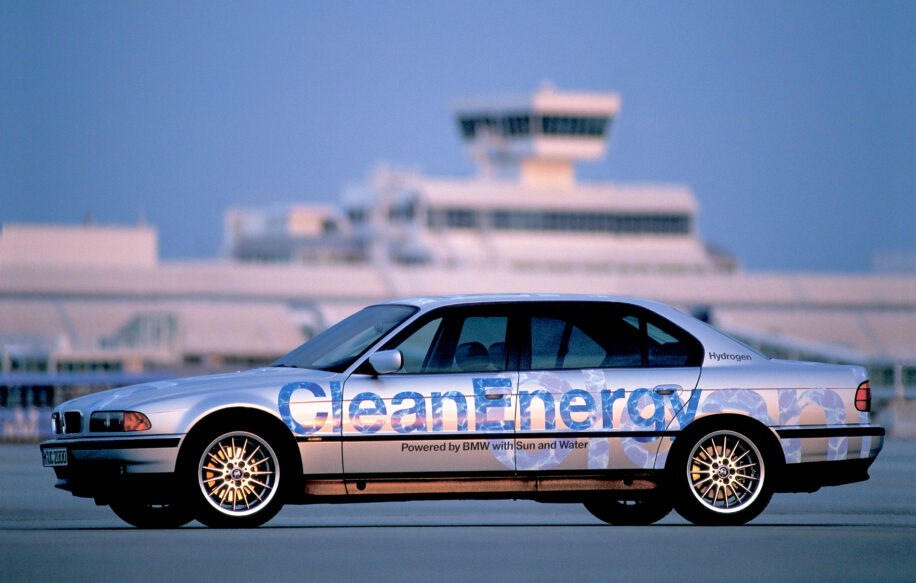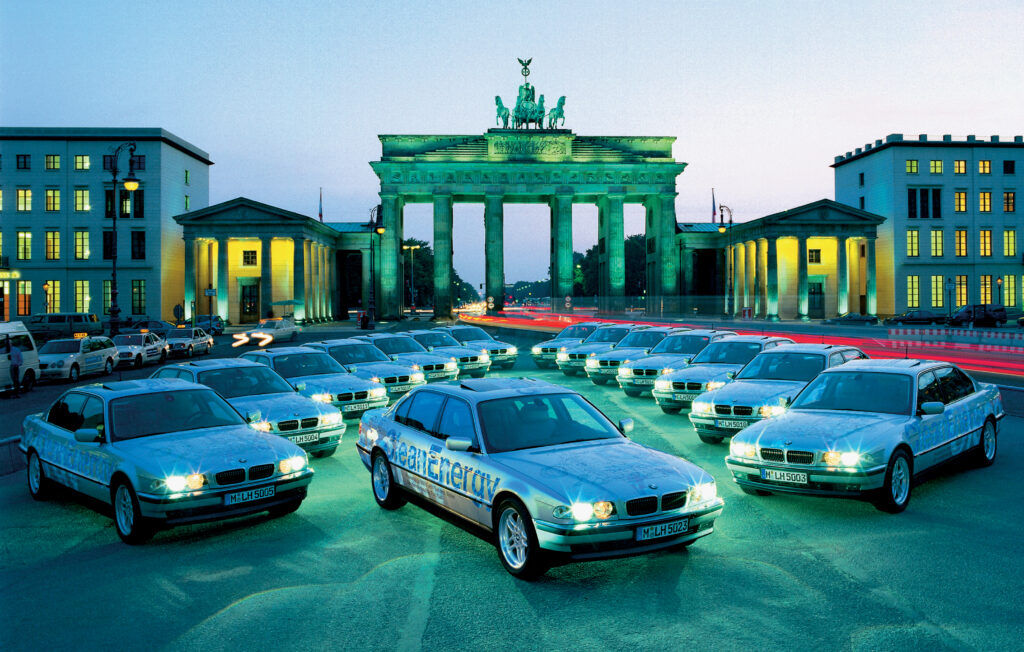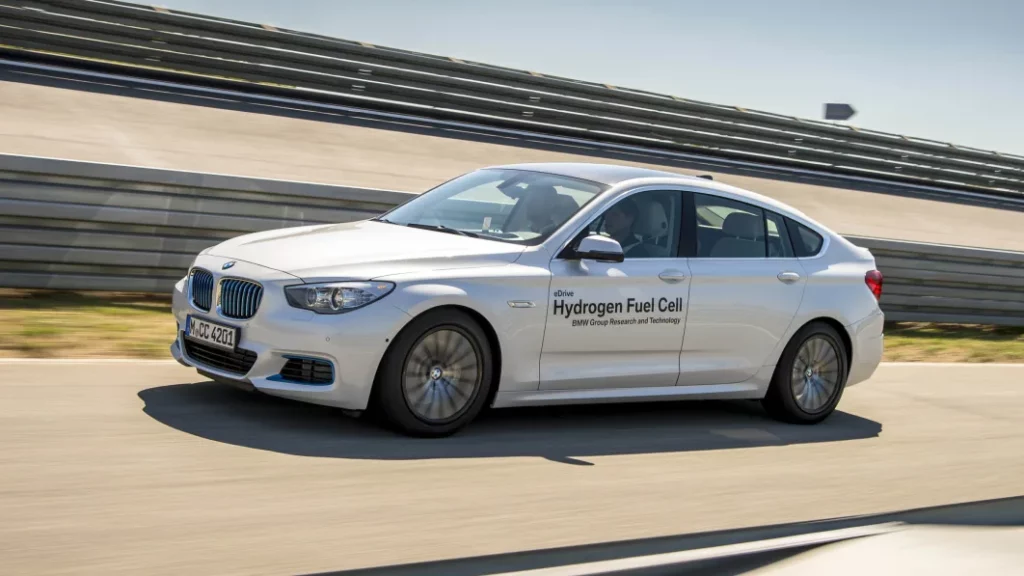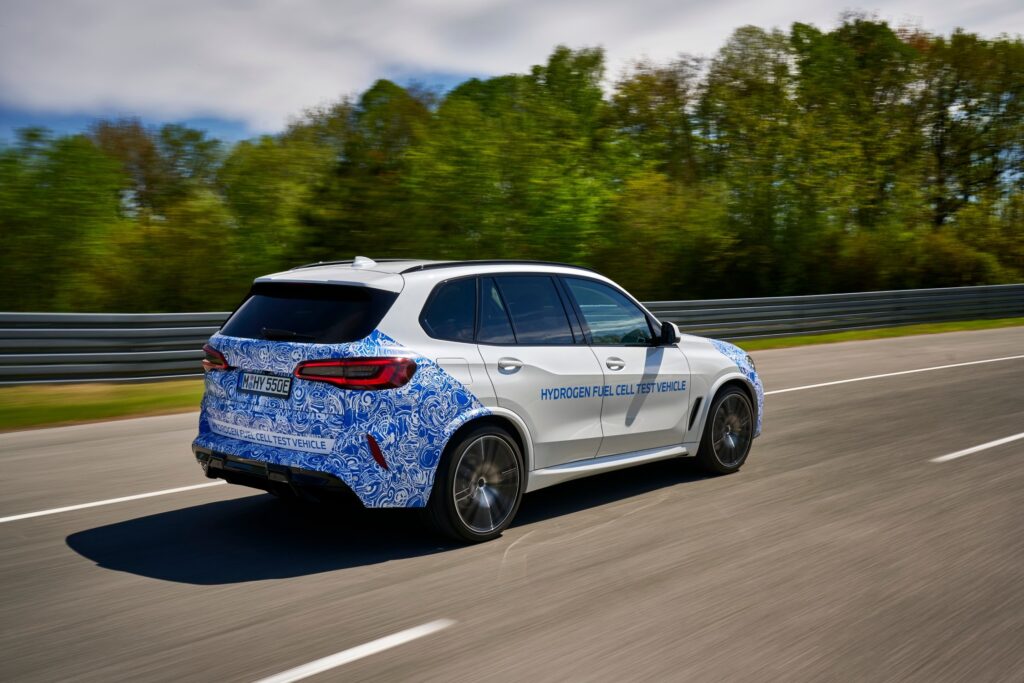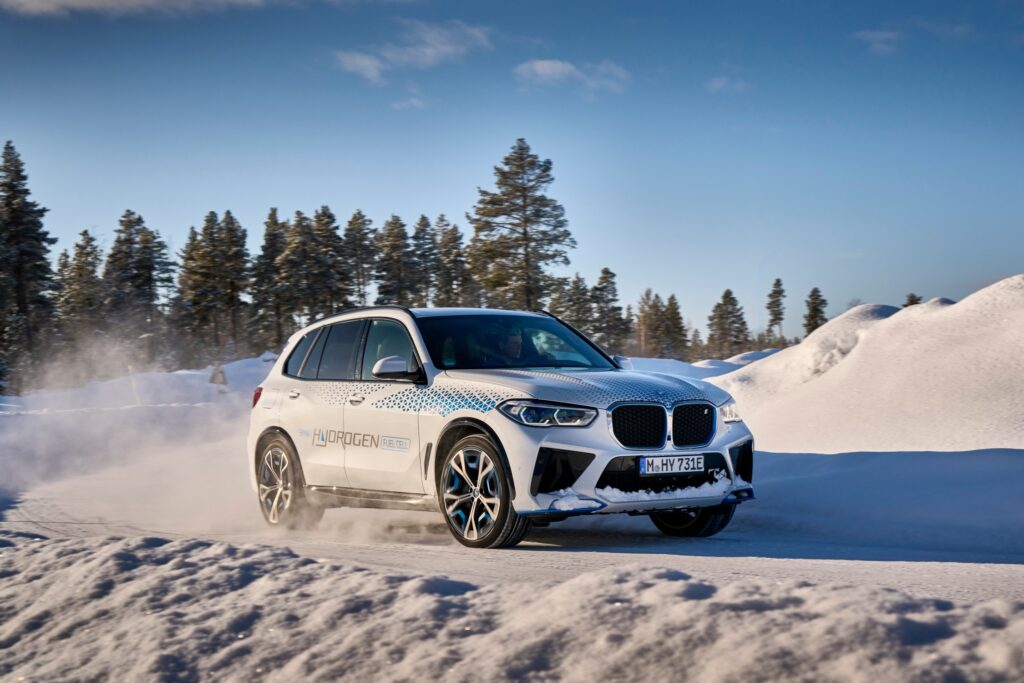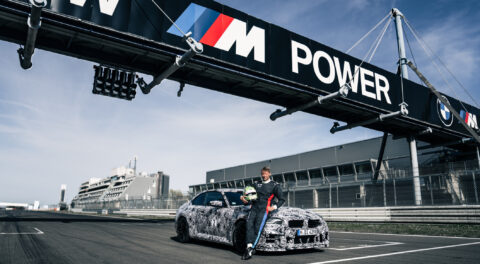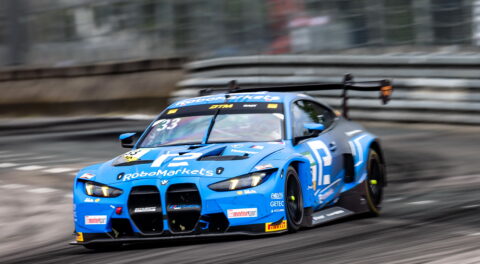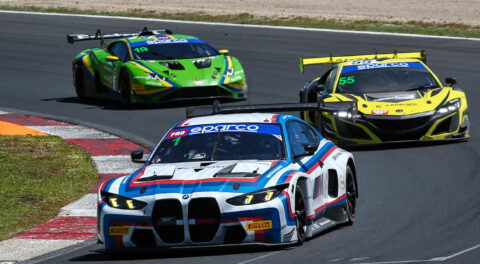It was sometime in the late 1990s. I vaguely remember reading about BMW testing hydrogen-powered cars—probably in Car and Driver or MotorTrend—and seeing a photo of a silver 7 Series, which sparked my awe and wonder of hydrogen as an alternative fuel. This was back when I didn’t own any BMWs. Back when E30s were cheap(er). Back when I thought that by 2020 we’d all be driving around with cars that emitted only water vapor, or maybe transiting in personal spacecraft.
This trip down memory lane was inspired by a recent BMW press release about the new iX5 Hydrogen and in-house fuel cell production—more on that in a bit. For now, we’re heading back to the late 90s.
Well, it turns out it was a silver 7 Series–an E38 to be exact. In 2000, around the time I was graduating from high school, BMW unveiled its first production-based vehicle, the 750hL. “Production-based” meaning it was built on the same production line as the gas-powered 7 Series in Dingolfing, though not available for sale to the public. They were first used as shuttles at the EXPO 2000, a world’s fair held in Hannover, Germany. The 750hL was a hybrid in the sense that it could run on either hydrogen or gas. The hydrogen fuel cell was quite small, but offered a surprising range of over 200 hydrogen-powered miles.
While the technology was there, the infrastructure needed to catch up to make this a viable alternative. Dr. Burkhard Göschel, Development Director of the BMW Group at the time, stated, “Our aim is to have a sufficient network of hydrogen fuel stations all over Europe by the year 2010.” By 2010, BMW had planned to have sold several thousand hydrogen cars. This was a lofty goal as the first public Hydrogen fuel station in Munich had only opened a year prior, in 1999.
The next big hydrogen development for BMW was in 2006 with the Hydrogen 7. BMW stated, “The BMW Hydrogen 7 is based on the existing 7 Series and comes equipped with an internal combustion engine capable of running on liquid hydrogen or petrol. In hydrogen mode the car emits nothing more than water vapor.” This was a similar setup to the aforementioned hydrogen-powered E38, just now packaged in the E65 chassis and made available in limited numbers to the public. How limited? Only 100 were produced. Who got them? BMW chose the “influencers” of 2006—public figures such as politicians and people in the entertainment industry—so they could help spread the awareness of the alternative fuel source.
In a press release at the time, BMW let the world know that they would continue to pursue hydrogen: “BMW continues to develop ultra-efficient, yet very dynamic petrol engines that significantly reduce fuel consumption and CO2 emissions. Together with clean performance diesel cars and the technologically advanced hybrid systems currently under development, the BMW Group has a clear strategy for sustainable mobility with hydrogen as the ultimate goal.”
In 2008, the E65 Hydrogen 7 received an update–the Hydrogen 7 mono-fuel. BMW ditched the gas-powered part of the previous bi-fuel setup and focused on the hydrogen-powered system. By focusing on a single fuel, the engine could be optimized to run hydrogen, increasing the vehicle’s range and performance while further lowering emissions.
BMW continued to develop hydrogen technology. In 2015, they tested a 5 Series GT equipped with a hydrogen fuel cell powering an electric motor. This was the predecessor for the BMW i Hydrogen NEXT concept car, which was unveiled in 2019. Both of these were a shift from the Hydrogen 7 because the hydrogen was now being used to generate electricity to power electric motors, not an internal combustion engine. In 2021, testing of this powertrain in “everyday conditions” began. BMW stated, “Prototypes of the BMW i Hydrogen NEXT will examine how effectively the CO2-free drivetrain, model-specific chassis technology and vehicle electronics systems work together under real-life conditions.”
Two years after introducing the BMW i Hydrogen NEXT concept car, the iX5 Hydrogen was presented at IAA Mobility 2021 in Munich. As with the concept, the iX5 uses hydrogen as fuel by converting it into electricity in a fuel cell, powering an electric motor, and delivering an output of up to 374hp. That level of power is needed to “guarantee the brand’s signature driving experience.”
While it seems that all-electric, plug-in vehicles are where most of the industry is going, there is still a potential need for using hydrogen as a vehicle’s fuel source. This would be useful in situations where, according to BMW, “customers do not have their own access to electric charging infrastructure, frequently drive long distances or desire a high degree of flexibility.”
That brings us to the present in our journey through BMW’s hydrogen history. BMW has announced that they are building fuel cells for BMW iX5 Hydrogen in house in Munich. BMW states, “The reason for this occasion is the small series of BMW iX5 Hydrogen cars that will be entering service around the world from the end of this year for test and demonstration purposes.” During this announcement, Chairman of the Board of Management of BMW AG Oliver Zipse, said “As a versatile energy source, hydrogen has a key role to play on the road to climate neutrality. And it will also gain substantially in importance as far as personal mobility is concerned. We think hydrogen-powered vehicles are ideally placed technologically to fit alongside battery-electric vehicles and complete the electric mobility picture.”
While I did start this story with my first recollection of BMW using hydrogen as an alternative fuel source, BMW was developing hydrogen fuel source technology well before that. They made a hydrogen-powered first-generation 5 Series test vehicle in 1976—they’ve been at it for a while. Perhaps in 2026 we can celebrate “50 years of hydrogen power” just as we’re celebrating “50 years of M” now. BMW has proven that its latest iteration of hydrogen technology works and nicely compliments its other emission-reducing platforms, but just as they’ve suggested over the last couple of decades, its adoption really comes down to the available supporting infrastructure. —Mike Bevels
[Photos courtesy of BMW.]

